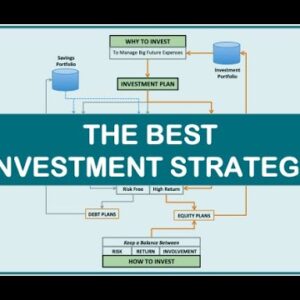
Outline:

1: Financial Planning for Retirement: Smart, Stress-Free Steps to Secure Your Golden Years
2: Understanding the Importance of Financial Planning
- Why retirement planning starts now
- The emotional and financial cost of poor planning
- Common myths about retirement savings
3: Setting Retirement Goals That Fit Your Lifestyle
- H3: Visualizing your retirement lifestyle
- H3: Estimating future living expenses
- H3: Determining your retirement income needs
4: Financial Planning Basics: Know Your Numbers
- Calculating your net worth
- Budgeting for retirement savings
- Tracking your financial milestones
5: The Power of Starting Early: Compound Interest Explained
- How your money multiplies over time
- Why procrastination costs more
- Real examples of early vs. late savers
6: Smart Saving Strategies for Retirement
- 401(k) plans and employer matches
- Traditional vs. Roth IRAs
- How much should you save monthly?
7: Diversifying Your Retirement Portfolio
- Stocks, bonds, and mutual funds
- Real estate and passive income streams
- H3: Why diversification reduces risk
8: How to Reduce Your Taxable Income Legally Before and During Retirement
- H3: Maxing out pre-tax retirement accounts
- H3: Using HSA accounts wisely
- H3: Leveraging tax deductions and credits
9: Avoiding Retirement Planning Mistakes
- Not accounting for inflation
- Underestimating healthcare costs
- Relying solely on Social Security
10: Creating a Withdrawal Strategy That Lasts
- The 4% rule explained
- Sequence of withdrawals
- Tax-efficient withdrawal tactics
11: Protecting Your Retirement Savings from Market Volatility
- Why risk tolerance matters
- Rebalancing your portfolio annually
- Safe haven assets to consider
12: Planning for Healthcare in Retirement
- Medicare basics
- Long-term care insurance
- Budgeting for medical emergencies
13: Financial Planning for Couples vs. Individuals
- Joint vs. separate accounts
- Coordinating retirement goals
- Planning for survivorship
14: Estate Planning as Part of Retirement Planning
- Creating a will or trust
- Power of attorney and healthcare directives
- Minimizing estate taxes
15: Using Financial Advisors and Planning Tools
- When to hire a financial planner
- Online calculators and apps
- What to look for in a retirement advisor
16: Staying Financially Fit in Retirement
- Budgeting in retirement
- Generating extra income
- Keeping up with inflation
- 17: Conclusion: Your Peace of Mind Starts with a Plan
18: FAQs About Financial Planning for Retirement
Financial Planning for Retirement: Smart, Stress-Free Steps to Secure Your Golden Years
READ MORE: How to Attract Venture Capital for Your Fintech Startup and Skyrocket Your Funding Success
Understanding the Importance of Financial Planning
Financial planning for retirement is more than just setting money aside—it’s about ensuring peace of mind when your regular paycheck stops. Let’s face it, the idea of retiring without financial security is terrifying. And sadly, too many people hit their 60s wishing they had started planning earlier.
Here’s the truth: retirement planning isn’t a luxury—it’s a necessity.
When you don’t plan properly, you face emotional stress, limited lifestyle choices, and even the risk of outliving your savings. But with a solid financial plan, you gain freedom, security, and the ability to enjoy your golden years on your own terms.
Financial planning for retirement isn’t just about numbers—it’s about peace of mind.
Imagine this: You’re 67 years old, the sun is rising, and you’re sipping coffee on your porch, smiling—not because you hit the lottery, but because you planned. Your bills are paid. Your home is yours. Travel plans are set. Your health is covered. You’re not relying on your children or worrying about inflation. You’re living life on your terms.
Now flip that image. Imagine reaching retirement age and realizing you have no savings, no plan, and your only option is to keep working—or worse, depend on others. The fear, the stress, the regrets… it’s a reality for millions.
That’s the difference financial planning makes. It’s not just about growing wealth. It’s about building freedom, reducing fear, and creating options—real options—for your future self.
Whether you’re in your 20s just starting out, in your 40s playing catch-up, or in your 50s with retirement around the corner, one thing is clear: the best time to start was yesterday. The second-best time is today.
In this complete guide, we’ll walk you through how to:
- Set clear retirement goals
- Build a strong, diversified portfolio
- Legally reduce your taxable income
- Avoid common retirement planning mistakes
- And create a step-by-step strategy that works for your lifestyle
Setting Retirement Goals That Fit Your Lifestyle
What does retirement look like for you?
Are you dreaming of a beach house, or are you more of a stay-at-home gardener? Setting clear goals helps tailor your financial planning strategy.
Think about:
- Where you want to live
- How often you want to travel
- Your desired monthly income
- Potential family support (kids, grandkids)
Estimating your future lifestyle gives you clarity on how much money you’ll need—and how much you need to start saving today.
Financial Planning Basics: Know Your Numbers
You can’t manage what you don’t measure. So let’s crunch some numbers:
- Net Worth = Assets – Liabilities
Know where you stand financially. - Budget your savings:
Allocate at least 15–20% of your monthly income toward retirement savings. - Set milestones:
Age 30 – 1x annual income saved
Age 40 – 3x
Age 50 – 6x
Age 60 – 8–10x
This basic tracking lays the foundation for all other aspects of financial planning.
The Power of Starting Early: Compound Interest Explained
Want to know the best-kept secret of financial planning? It’s compound interest.
Start saving $300/month at age 25, and by 65 you’ll have over $500,000—even if you never increase the amount. Delay until age 35, and you’ll only reach around $250,000. That’s the cost of waiting.
Let your money make money while you sleep.
Smart Saving Strategies for Retirement
When it comes to saving for retirement, there are a few key tools:
- 401(k): Most employers offer a match. That’s free money. Contribute enough to max it out.
- IRA (Traditional & Roth): Contribute up to $7,000 annually if you’re over 50.
- Catch-up contributions: Age 50+? The IRS lets you save extra.
Consistency, not complexity, is the key to building retirement wealth.
Diversifying Your Retirement Portfolio
Don’t put all your eggs in one basket.
Build a portfolio with:
- Stocks (for growth)
- Bonds (for stability)
- Mutual funds/ETFs (for diversification)
- Real estate or REITs (for passive income)
A diverse portfolio protects your savings from market shocks—and keeps your retirement dreams intact.
How to Reduce Your Taxable Income Legally Before and During Retirement
Here’s where financial planning gets juicy. Want to pay less tax? Here’s how:
- Max out pre-tax accounts: Contributions to 401(k)s, Traditional IRAs, and HSAs lower your taxable income.
- Use Health Savings Accounts (HSAs): Triple tax benefits—contribute pre-tax, grow tax-free, and withdraw tax-free for medical expenses.
- Deduct your charitable donations: Especially in retirement when your itemized deductions may be higher.
- Delay Social Security until age 70: Bigger payouts, and you defer taxable income.
- Consider Roth conversions: Pay taxes now at a lower rate, withdraw tax-free later.
Always consult with a tax planner or advisor to customize your approach.
Avoiding Retirement Planning Mistakes
The road to retirement is filled with potholes. Watch out for these:
- Ignoring inflation: What costs $3,000/month today might cost $4,000+ in 15 years.
- Forgetting about healthcare: Medicare doesn’t cover everything. Plan for out-of-pocket expenses.
- Depending only on Social Security: It was never meant to be your sole income.
Good financial planning means thinking ahead—not just reacting.
Creating a Withdrawal Strategy That Lasts
So you’ve saved. Great. Now, how do you make it last?
- Follow the 4% rule: Withdraw 4% of your nest egg annually.
- Withdraw in order: Use taxable accounts first, then IRAs, then Roths.
- Minimize taxes on withdrawals: Work with a CPA or advisor.
A smart withdrawal plan is just as important as a smart savings plan.
Protecting Your Retirement Savings from Market Volatility
Let’s face it—markets are unpredictable. One day your portfolio is soaring, the next it’s taking a hit from global news, inflation fears, or political drama. And when you’re retired or nearing retirement, even a small market dip can feel like a full-blown financial earthquake.
So the question is: How do you protect your hard-earned retirement savings from market volatility without sacrificing growth?
The answer lies in smart, proactive financial planning.
Why Risk Management Matters in Retirement
When you’re young, volatility is just part of the ride—you’ve got time to recover. But once you’re older or relying on that nest egg to pay your bills, the stakes are higher. A major downturn could:
- Slash the value of your retirement portfolio
- Force you to sell investments at a loss
- Delay your retirement
- Reduce the income you’ve planned to live on
This is why building a volatility-proof retirement strategy isn’t just smart—it’s essential.
1. Know Your Risk Tolerance (And Reassess It Regularly)
Risk tolerance isn’t static. It changes with age, income, health, and goals.
In your 30s and 40s, you might feel comfortable with 70–80% in stocks. But in your 60s or beyond, that same allocation could be risky. Reassess your risk profile every 3–5 years, or after a major life change.
Use tools like:
These can help you align your asset allocation with your comfort level.
2. Diversify Your Investments Strategically
Diversification is your safety net. It’s the equivalent of not putting all your eggs in one basket—and it works.
Smart diversification for retirement might include:
- U.S. and international stocks
- Government and corporate bonds
- Real estate investment trusts (REITs)
- Dividend-paying stocks
- Cash or short-term savings vehicles
This way, when one sector slumps, others may stay stable or even grow. The goal is to smooth out the ride—not eliminate risk entirely.
3. Rebalance Your Portfolio Annually
Rebalancing means adjusting your investment mix back to its original or target allocation. Why is this important?
Because over time, gains in one area (like stocks) can overweight your portfolio and expose you to more risk than you intended.
Example:
Your target is 60% stocks, 40% bonds. After a great stock market year, you’re sitting at 75% stocks. Rebalancing brings it back to 60/40, protecting you if the market turns.
Set an annual reminder, or use automated tools like:
- Betterment
- Wealthfront
- Robo-advisors and retirement platforms that auto-rebalance
4. Allocate a Portion to Safe Haven Assets
Not all your money needs to be in the market. A portion of your portfolio—especially in the 5 years before or after retirement—should be allocated to low-risk, low-volatility assets, such as:
- Treasury Inflation-Protected Securities (TIPS)
- Certificates of Deposit (CDs)
- High-yield savings accounts
- Fixed annuities
- Money market funds
These won’t grow like stocks, but they preserve capital—ideal when you need stability.
5. Build a Retirement Income Buffer
One of the best-kept secrets in financial planning is the concept of a “retirement buffer fund.”
This is simply 2–3 years of living expenses kept in cash or ultra-safe investments (like money market accounts). When the market is down, you pull from the buffer instead of selling investments at a loss.
It’s like a shock absorber for your retirement income.
6. Use a Bucket Strategy for Withdrawals
The bucket strategy divides your retirement savings into three parts:
- Bucket 1: Cash for 1–2 years of expenses
- Bucket 2: Bonds or fixed-income for the next 3–5 years
- Bucket 3: Stocks and long-term growth for 5+ years
This layered approach lets you weather short-term volatility while keeping long-term assets invested.
7. Delay Withdrawals if Possible During Market Downturns
If the market drops, try to avoid withdrawals—even if it means cutting back temporarily. The first 5 years of retirement are the most critical because losses during this window can permanently damage your portfolio’s longevity (this is called sequence of returns risk).
If you have flexibility, consider:
- Drawing from cash reserves
- Taking part-time work
- Adjusting discretionary spending temporarily
8. Don’t Let Fear Drive Your Decisions
Market crashes are emotional. And when emotions go up, logic often goes down. It’s during these times that people make the biggest mistakes—like panic selling or pulling out of the market entirely.
Reminder: Market downturns are temporary. Recovery is normal. Long-term discipline wins every time.
If you can’t sleep at night, review your asset allocation—not your entire plan.
9. Work with a Financial Advisor During Market Uncertainty
Sometimes the best decision you can make is to bring in a pro. A fiduciary financial planner can:
- Review your current investment strategy
- Offer risk mitigation strategies
- Help you stay calm and focused during volatile markets
You wouldn’t do surgery without a doctor—why risk your retirement without a planner?
Look for advisors who are fee-only and certified (e.g., CFP, CFA).
Final Thoughts on Market Volatility and Your Retirement
Market volatility is inevitable—but it doesn’t have to wreck your retirement. With the right financial planning strategies, you can ride out the storms and still reach your destination.
The key? Be proactive, not reactive.
Build a diversified portfolio. Rebalance regularly. Use a buffer. And most importantly—stay focused on your long-term goals. Because retirement isn’t about reacting to headlines. It’s about building a life you love, one smart decision at a time.
Planning for Healthcare in Retirement
Health costs are the #1 retirement budget killer.
- Enroll in Medicare at 65
- Buy a Medigap policy for coverage gaps
- Consider long-term care insurance if you have limited family support
Budget at least $300–$500/month for healthcare expenses in retirement.
Financial Planning for Couples vs. Individuals
Two can retire more affordably than one—but only if you plan together.
- Align retirement ages
- Decide on joint vs. individual accounts
- Create survivorship plans in case one partner passes
Talk about money openly—it’s a team sport.
Estate Planning as Part of Retirement Planning
Planning your legacy is part of smart financial planning.
- Write a will or trust
- Designate beneficiaries
- Assign powers of attorney
These steps ensure your loved ones are cared for—and your wishes are honored.
Using Financial Advisors and Planning Tools
Feeling overwhelmed? Don’t go it alone.
- Hire a fiduciary advisor who works in your best interest
- Use tools like Personal Capital and Vanguard’s Retirement Calculator
A second opinion could save you thousands.
Staying Financially Fit in Retirement
Retirement doesn’t mean your money journey ends.
- Continue budgeting
- Look for ways to generate passive income (rentals, royalties, etc.)
- Keep investments adjusted for inflation
Retirement is a phase—not the finish line.
Conclusion:
Your Peace of Mind Starts with a Plan
At the heart of every secure retirement is financial planning. It’s your map, compass, and flashlight all rolled into one. Whether you’re 25 or 55, the time to start is now. The more proactive you are, the more joyful your retirement will be.
So go ahead. Build your plan. Track your progress. And rest easy knowing your golden years are covered.
Let’s be honest—financial planning for retirement can feel overwhelming. With so many numbers, accounts, risks, and unknowns, it’s easy to put it off and hope for the best. But here’s the truth: hope is not a strategy.
Planning for retirement isn’t about being rich. It’s about being ready.
It’s about being able to:
- Sleep at night without worrying about outliving your savings
- Travel, relax, and enjoy life without guilt or financial anxiety
- Help your children or grandchildren without jeopardizing your own well-being
- Wake up every morning in your retirement years knowing that the bills are paid and your life is in your control
The beauty of financial planning is that it empowers you—regardless of your income, age, or background. It’s the ultimate form of self-care and security. It’s saying, “I value my future enough to act today.”
Start where you are. Whether you’re 25 or 55, whether you’ve saved a little or a lot—you can take control of your financial future right now. Break your goals into steps. Automate what you can. Get help where you need it. And most importantly, stay consistent.
Retirement is not the end of your journey. It’s the reward. And with solid financial planning, that reward can be everything you’ve imagined—and more.
So don’t wait. Start today. Your future self will thank you.
FAQs
1. What is the best age to start financial planning for retirement?
The best time to start is in your 20s, but it’s never too late. Starting early maximizes compound interest.
2. How much money do I need to retire comfortably?
A good rule of thumb is 10–12 times your final annual salary. Use calculators to refine your number.
3. Can I rely on Social Security for retirement?
No. It should supplement your income, not be your primary source. Always plan for multiple income streams.
4. Is it worth hiring a financial advisor?
Yes—especially if you’re nearing retirement or managing complex investments. Look for a fiduciary.
5. What are some tools I can use for retirement planning?
Try apps like Mint, YNAB, Personal Capital, or use spreadsheets with clear monthly savings goals.







